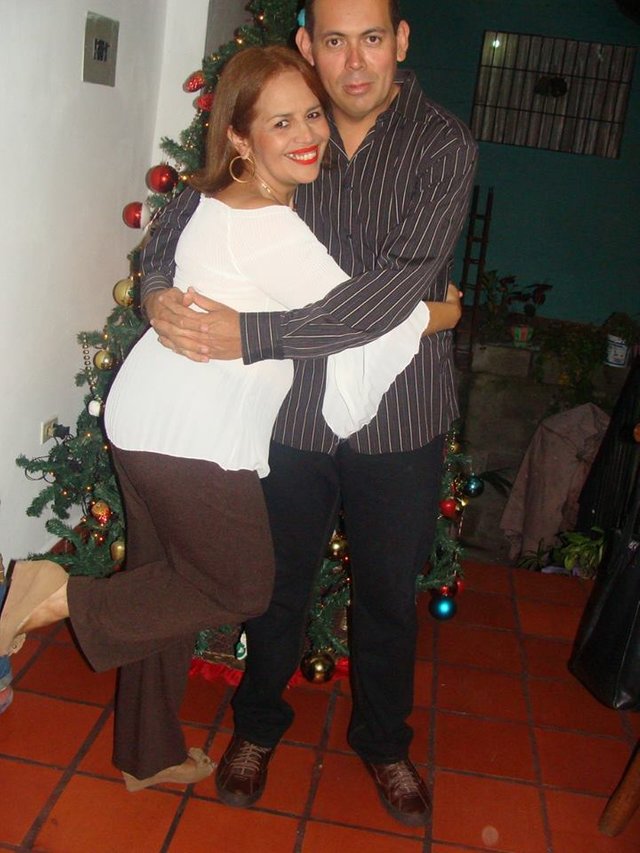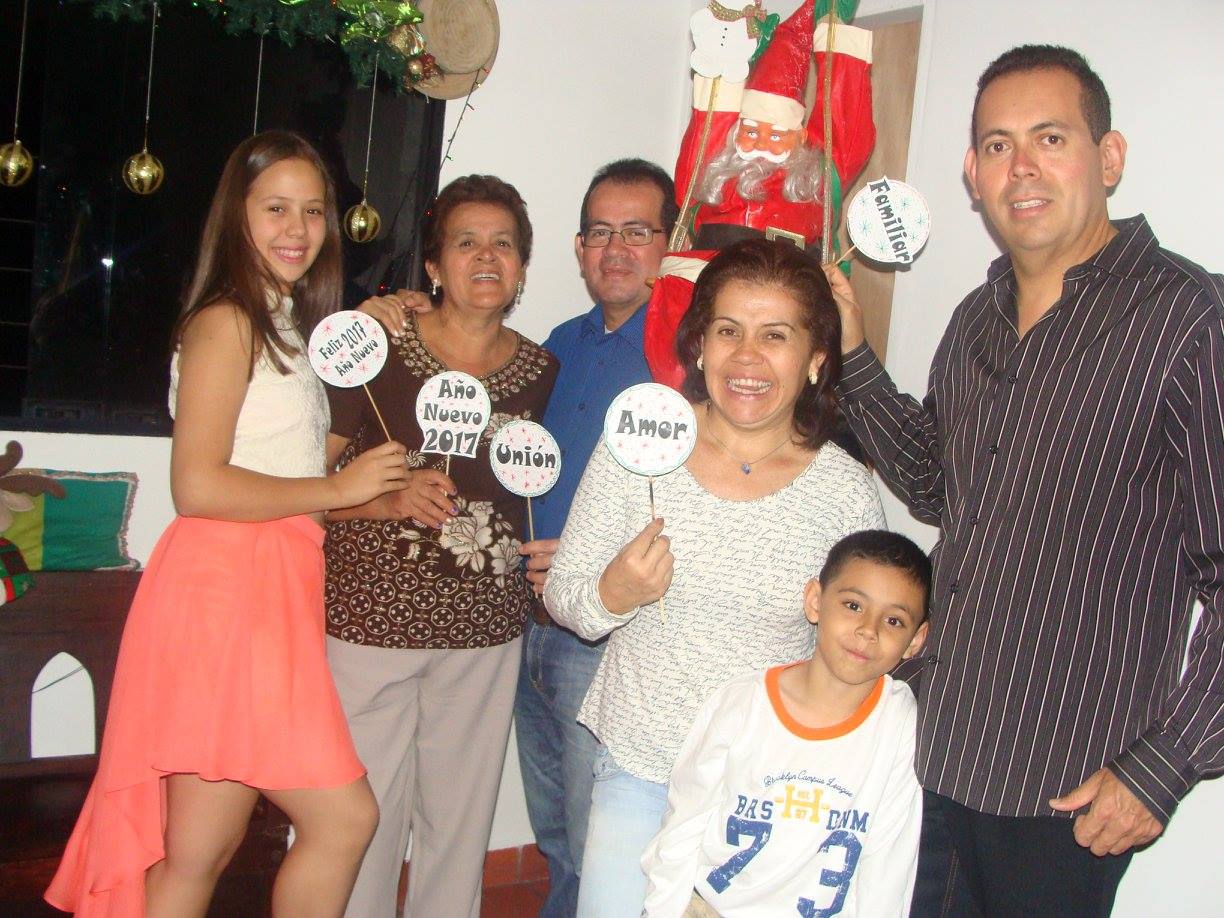Hello friends of steemit today I want to share my experience with you. Seven years ago, because of life issues and to be more precise, on November 19, 2010, I received some of my worst news after a series of exams.
The hematologist Irislus Rojas of the IVSS in the state of Merida Venezuela approaches me and he takes me to his office and tells me Luis is in the presence of a cancer in the blood (chronic meloid leukemia).

I felt that the world was coming and that the time had come to leave this earthly plane, I was immediately hospitalized and began a series of tests including bone marrow extraction among others, it was a 15 day torture where I was studied in my whole body some simple others painful.
After several days they decided to start medical treatment with the medicine called Sprycel which I could tolerate for a few days because I got too low my white blood cells and started to feel very weak and very allergic in my body because I was intoxicating and my body was not I tolerated it.
After other series of tests decide to change to Glivec, for my criteria I consider it as the miraculous pill because since I started taking it my life changed getting a quick response in my body and normalizing all my values.
After 7 years in treatment I have returned to a normal life where I work and do all my things without hindrance and fear because for doctors I am a miracle of God. Currently I am a patient totally in remission.
With this I want to bear witness that when one clings to the faith and especially to our Lord Jesus Christ everything is possible, thanks to this he taught me that without faith and love our Lord God we are nothing because he promised to be always with we and while there is life there is hope.

My wife who has supported me in this long process of my life
I want to give encouragement and security, to anyone who for some reason or other are in these cases, do not lose faith and never stop believing in God our father and his son our Lord Jesus since they are a promise of life and healing
Do not stop fighting and even if you think that everything is lost, God is still ...
Here I leave more extensive information about it
What is chronic myeloid leukemia?
Cancer arises when the cells in the body begin to grow uncontrollably. Cells in almost any part of the body can become cancer and can spread to other areas of the body.
Chronic myeloid leukemia (CML), also known as chronic myelogenous leukemia, is a type of cancer that starts in certain blood-producing cells of the bone marrow. In chronic myeloid leukemia (CML), a genetic change occurs in an early (immature) version of myeloid cells (the cells that make red blood cells, platelets, and most types of white blood cells (except lymphocytes). It forms an abnormal gene called BCR-ABL, which converts the cell into a CML cell.The leukemic cells grow and divide, accumulate in the bone marrow and spread to the blood.During this time, the cells can also invade other parts of the body, including the spleen CML is a leukemia whose growth is relatively slow, but it can also turn into an acute, rapidly growing leukemia that is difficult to treat.
Most cases of CML occur in adults, although it rarely occurs in children as well. In general, children receive the same treatment as adults.
What is leukemia?
Leukemia is a cancer that originates in the blood-producing cells of the bone marrow. When one of these cells changes and becomes a leukemia cell, it no longer matures normally. Often, it divides to form new cells faster than normal. In addition, leukemia cells do not die when they should, but accumulate in the bone marrow and displace normal cells. At some point, the leukemia cells leave the bone marrow and enter the bloodstream, often causing an increase in the number of white blood cells in the blood. Once in the blood, the leukemic cells can spread to other organs, where they can prevent the normal functioning of other body cells.
Leukemia is different from other cancers that start in organs such as the lungs, colon or breast and then spread to the bone marrow. The types of cancer that start elsewhere and then spread to the bone marrow are not leukemias.
Not all leukemias are the same. When doctors know the specific type of leukemia that the patient suffers, they can make a better prognosis (have a better perspective) and select the best treatment.
What is a chronic leukemia?
Whether the leukemia is acute or chronic depends on whether most of the abnormal cells are immature (and more like stem cells) or mature (and look more like normal white blood cells).
In chronic leukemia, cells can partially mature. These cells are not normal, although they seem to be quite normal. In general, they do not fight infections as well as normal white blood cells. Leukemic cells survive longer than normal cells, accumulate and displace normal cells in the bone marrow. With chronic leukemias it may be a long time before they cause problems, and most people can live for many years. However, chronic leukemias are generally more difficult to cure than acute leukemias.

The love of my family has been a source of energy that motivates me to move forward
What is myeloid leukemia?
Whether the leukemia is myeloid or lymphocytic depends on which bone marrow cells the cancer originates from.
Myeloid leukemias (also known as myelocytic, myeloid or non-lymphocytic leukemias) originate in primitive myeloid cells (cells that become white blood cells [other than lymphocytes], red blood cells, or platelet-producing cells [megakaryocytes]).
What are the other types of leukemia?
The four main types of leukemia are based on whether they are acute or chronic, and whether they are myeloid or lymphocytic:
Acute myeloid (or myelogenous) myeloid leukemia (AML)
Myeloid or chronic myeloid leukemia (chronic myeloid leukemia, CML)
Acute lymphocytic (or lymphoblastic) leukemia (acute lymphocytic leukemia, ALL)
Chronic lymphocytic leukemia (CLL)
In acute leukemias, the cells of the bone marrow can not mature properly. These immature cells continue to reproduce and accumulate. Without treatment, most people with acute leukemia would live only a few months. Some types of acute leukemia respond well to treatment, and many patients can be cured. Other types of acute leukemia have a less favorable outlook. Lymphocytic leukemias (also known as lymphoid or lymphoblastic leukemia) originate in cells that become lymphocytes. Lymphomas are also cancers that originate in these cells. The main difference between lymphocytic leukemias and lymphomas is that in leukemia, the cancer cell is found mainly in the blood and bone marrow, while the lymphoma tends to be in the lymph nodes and other tissues.
I hope it will be of great information and thanks for reading.